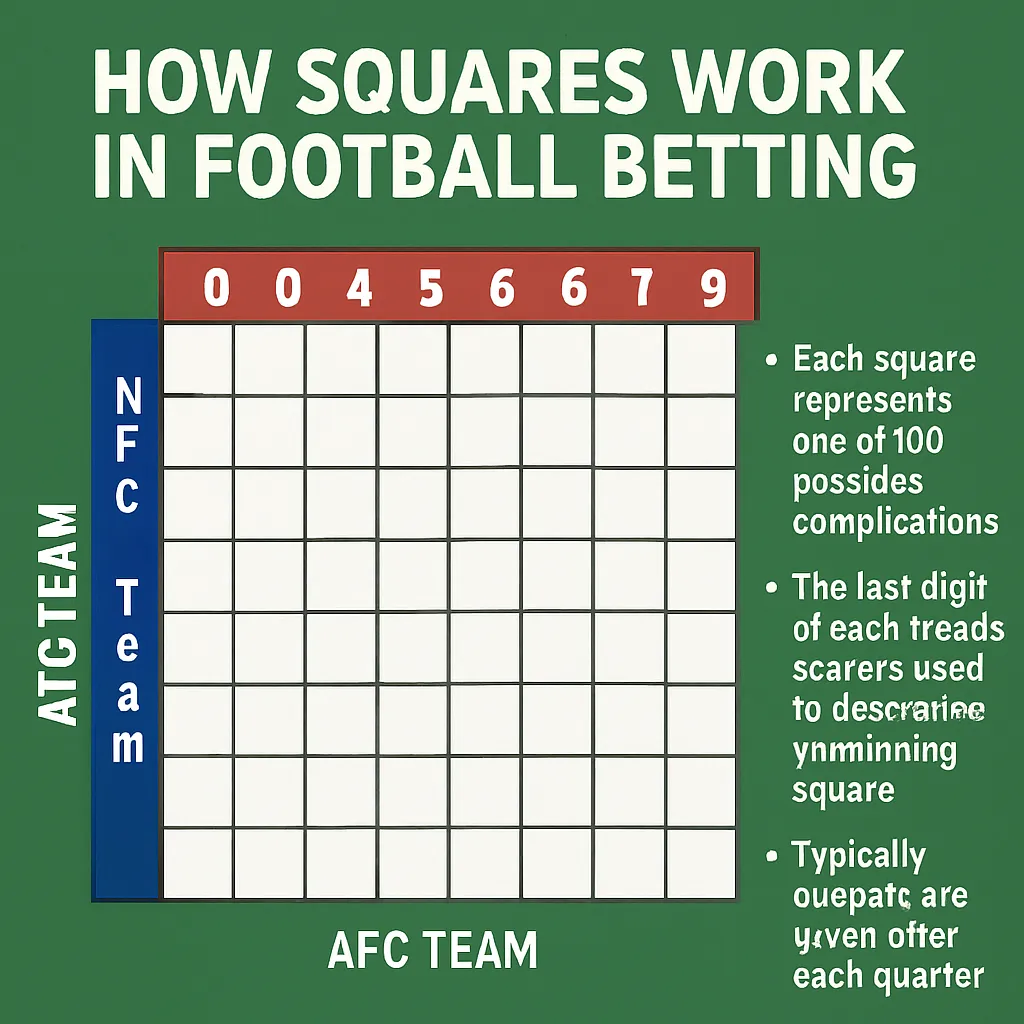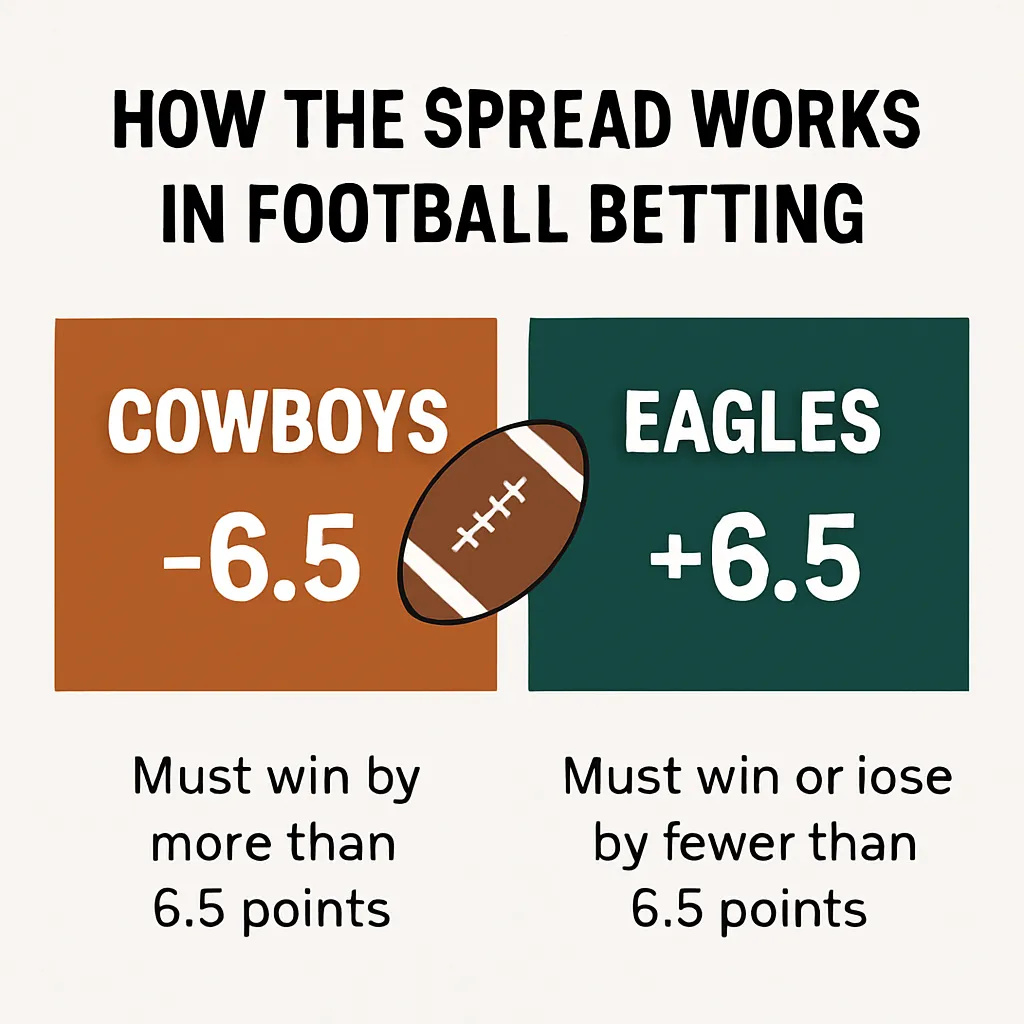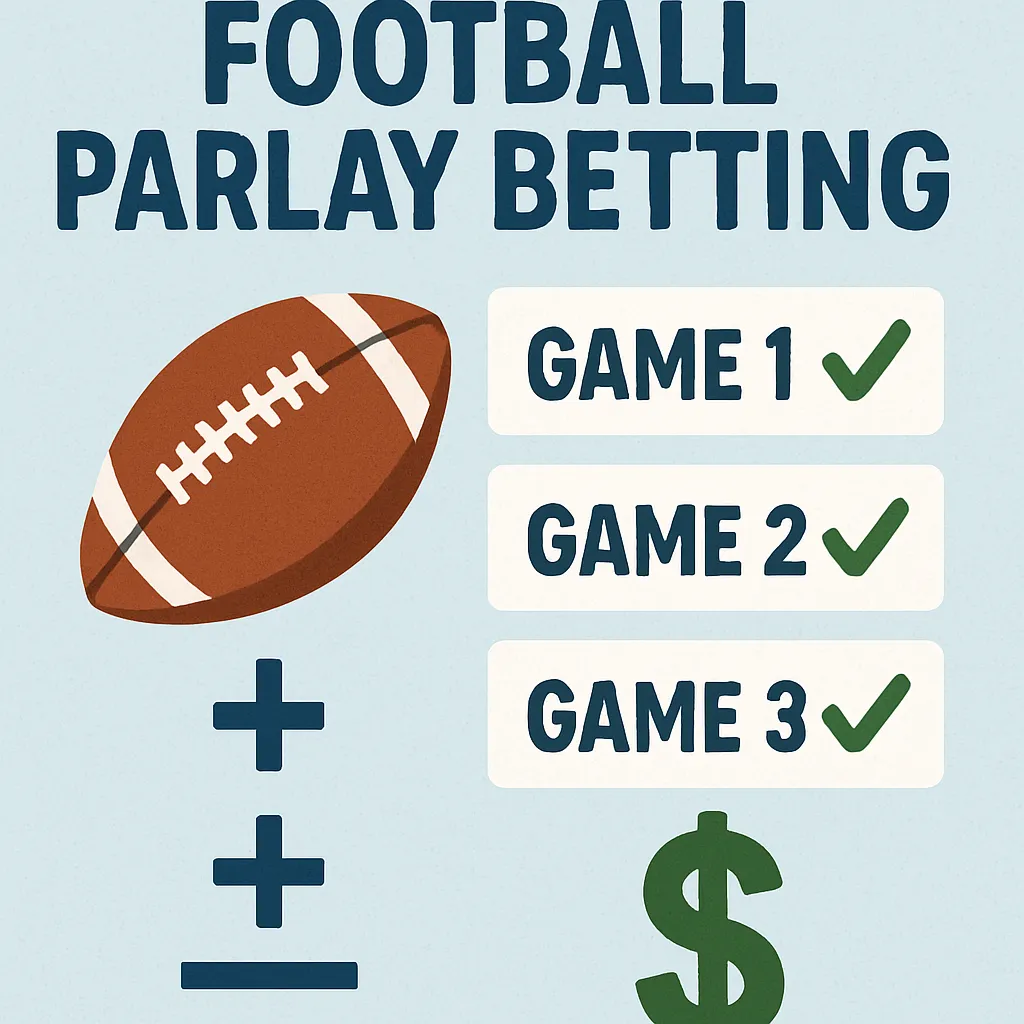When you first hear about football squares, you might wonder how they work and why they’ve become a staple of game-day fun. At its core, the question is simple: how do squares work in football betting, and how can you maximize enjoyment (and maybe even profit) when you play? This article will guide you through the essentials of the football squares grid, explain the mechanics behind number assignment, and offer practical advice on strategy. Whether you’re joining a friendly office pool or organizing a backyard betting game, understanding the football squares concept is key. By the end, you’ll know exactly how squares work in both casual and more serious football betting contexts. Let’s dive in.
What Are Football Squares?
Definition and Basic Concept
Football squares is a simple but engaging betting game often played during football matches, especially the Super Bowl. At its heart, a grid of 10 by 10 squares is created, resulting in 100 individual boxes that participants can buy into. Each square represents a unique pairing of the last digit of the home team’s score and the last digit of the away team’s score. Participants select squares before the game begins, usually paying a fixed amount per square to fund a prize pool. Once the game is underway, the numbers assigned to each row and column come into play at the end of each quarter and at the final whistle. It’s this randomized number assignment that makes the game unpredictable, combining chance with the excitement of football betting.
Differences Between Football and Super Bowl Squares
While football squares and Super Bowl squares are often used interchangeably, there are subtle distinctions. Super Bowl squares typically refer to a themed variant where the prize pool and participation are focused on the annual championship game. Meanwhile, generic football squares can be organized for any regular-season or playoff contest. In Super Bowl pools, the stakes and prize distributions are usually larger due to heightened interest, but the underlying mechanics remain identical. Some groups add special rules or side bets specific to the Super Bowl, such as halftime score squares or even bonus prizes for unusual score combinations. Regardless of the occasion, learning how squares work in a general football context prepares you to join any squares pool, from league matchups to championship showdowns. Ultimately, the appeal of football squares lies in its blend of simplicity and suspense, whether for the Super Bowl or any big game.
How Do Football Squares Work?
Setting Up Your Squares
Setting up a football squares grid is straightforward. Begin by drawing a 10×10 grid on paper or using an online generator, labeling rows for the home team and columns for the away team. Participants then “buy” or claim individual squares by writing their names (or initials) inside the empty boxes; each square usually costs the same amount, contributing to the prize pool. Before the game, it’s essential to confirm payment and list all participants clearly to avoid any disputes later. Some organizers prefer to pre-fill the grid with names drawn at random, emphasizing the chance-based nature of the game. Once every square is claimed, you’re ready to assign numbers. This initial setup is crucial for ensuring fairness and clarity throughout the football betting process.
Assigning Numbers to Squares
After all squares are claimed, you need to assign digits 0 through 9 to each row and column. To maintain randomness, most groups write the numbers on pieces of paper, shuffle them, and place one number randomly on each row or column header. The horizontal axis typically represents the last digit of the away team’s score, while the vertical axis represents the home team’s score digit. This means a square labeled (3,7) would win if the away team ends with a score ending in 3 and the home team ends in 7 at the designated scoring period. Understanding how squares work in practice hinges on these number assignments, as they directly influence which squares become winners. Proper randomization here is vital to the integrity of the football betting pool.
Determining the Winner
Winners are determined at the end of each quarter and at the final score, depending on your pool’s rules. The score at each interval is reduced to its last digit for both teams. For example, if the first-quarter score is Home 14 – Away 7, you look at the “4” for the home team and “7” for the away team. Find the square where row 4 intersects column 7—that square wins the first-quarter prize. This process repeats for the halftime, third-quarter, and final results if you choose multiple payout periods. Some groups even award prizes for oddities, like overtime scores or exact matches. Tracking how squares work in real time builds excitement and keeps everyone engaged throughout the game.
Strategies and Tips for Football Squares
Common Strategies to Increase Winning Chances
Although football squares is predominantly a game of chance, there are a few strategies that seasoned players use to give themselves a slight edge. First, study historical scoring patterns—certain digits like “0,” “3,” and “7” appear more frequently at the end of football scores. Second, target squares on the outer edges of the grid, as these often feature those higher-frequency digits. Third, if your pool allows selecting multiple squares, diversify your choices across rows and columns to cover more potential outcomes. Fourth, join pools that offer more payout periods, so winning at any one quarter still nets you a return. By combining these approaches, you can tilt the odds ever so slightly in your favor without undermining the core randomness of the game.
- Analyze past score data to identify common end-of-game digits.
- Select squares with high-frequency digits like 0, 3, and 7.
- Distribute your picks across different rows and columns.
- Join pools with multiple payout intervals for more winning opportunities.
Tips for Beginners
If you’re new to football squares, don’t worry—anyone can play. Start by joining a casual pool with friends or colleagues to learn the ropes without significant financial risk. Keep track of how the numbers are assigned and how winners are determined during the game; hands-on experience is the best teacher. Ask your pool organizer to walk you through a mock round before kickoff so you feel confident. Remember that squares work on pure chance—there’s no shame in not “winning” as long as you’re enjoying the football betting atmosphere. Finally, familiarize yourself with all the payout rules, including any tie-breakers, to avoid confusion when the game heats up.
- Join a small, friendly pool to get comfortable with the mechanics.
- Observe the assignment of numbers and how winners are chosen.
- Practice a mock round before the actual game starts.
- Accept the luck element and focus on fun, not just winning.
Variations and Rules of Football Squares
While the classic grid is most common, many groups introduce custom rules and variations to spice up their football squares pools. Below is a comparison of some popular twists that can alter payout structure, entry cost, or win conditions. Feel free to mix and match these variations to create a unique pool that fits your group’s style.
| Variation | Description | Prize Structure |
|---|---|---|
| Progressive Jackpot | Unclaimed quarter winners roll into a growing pot. | Increasing payouts for each quarter. |
| Exact Score Bonus | Extra prize for correctly guessing full final scores. | Flat bonus on top of final-quarter win. |
| Halftime Random Draw | Random square selected at halftime, independent of score. | Fixed bonus for the drawn square. |
| High-Roller Squares | Premium squares with higher cost and larger prizes. | Unequal buy-in, tiered payout. |
Standard Rules
In the standard football squares setup, each quarter’s end-digit score determines a winner, and the total pot is evenly divided among the quarters. Entry costs are uniform, making each square equal in value. Only one prize is awarded per quarter, and ties are typically resolved by splitting the prize or using a pre-agreed tie-breaker, such as the team with more yardage. Overtime may or may not count depending on pool rules, so clarify this before kickoff. The pool organizer collects all money upfront, fills out the grid, then handles payouts immediately after each scoring interval. These standard rules form the foundation of most football betting squares pools.
Popular Variations
Beyond the classic format, many groups adopt variations like progressive jackpots or exact-score bonuses to keep things interesting. Some pools award smaller amounts for unusual scorelines, such as safety-only scores. Others allow last-minute square trades before the game begins, adding a layer of market strategy to the simple grid. For larger events, organizers sometimes hold live auctions for high-value squares, turning football squares into a spectator event in itself. Whatever variation you choose, always establish rules clearly and distribute them well before kickoff to avoid confusion. Understanding these popular squares work twists can help you craft a pool that’s both fair and exciting.
Legal Considerations
Understanding the Legal Framework
Before hosting or joining a football squares pool, it’s crucial to understand the gambling laws in your jurisdiction. In some regions, any betting pool with an entry fee may be considered illegal gambling unless sanctioned by a state lottery or gaming commission. Others allow small, private pools among friends and coworkers, as long as no one profits beyond cost recovery. Always check local regulations—online resources or legal counsel can clarify whether community pools are permitted. If you’re organizing a large-scale pool, consider formal registration or licensing to avoid potential fines. Awareness of how football betting laws apply to squares pools will keep your event fun and compliant.
Responsible Betting Tips
Responsible gambling is essential whenever money is on the line, even for friendly football squares pools. Set clear buy-in limits and encourage participants to only wager what they can afford to lose. If your pool grows large, allocate a portion of the proceeds to charity to add a positive social impact. Remind players that the outcome is largely random—no strategy guarantees a win. Provide resources for participants who may feel uncomfortable or out of control, such as helpline numbers for gambling support. By promoting responsible play, you ensure that everyone enjoys the football squares experience without undue risk.
Conclusion
Football squares combines the thrill of football betting with the simplicity of a random grid, making it perfect for players of all experience levels. From setting up your squares to learning how squares work in determining winners, this guide has covered the essentials you need to host or join a pool confidently. Explore the various strategies, experiment with popular variations, and always prioritize legal and responsible betting practices. Ready to start your own squares pool? Grab a grid, invite your friends, and enjoy the game—may luck (and a little strategy) be on your side!



